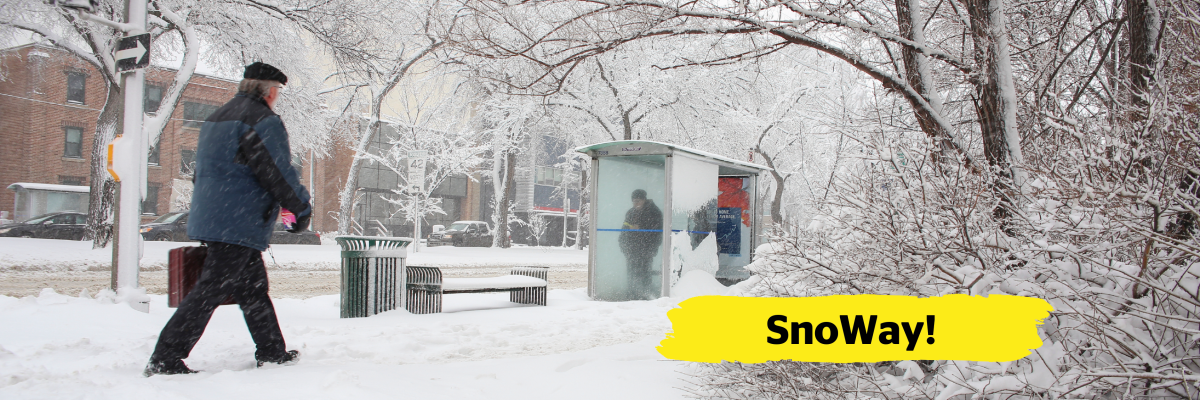 Winter weather can mean treacherous travel conditions for millions of pedestrians across Canada, especially for children, seniors, people with strollers and persons with disabilities. Snow and ice-covered sidewalks, crossings and transit routes increase the risk of slip-and-fall accidents for pedestrians and pose serious safety and mobility risks for people who are blind, Deafblind, or have low vision.
Winter weather can mean treacherous travel conditions for millions of pedestrians across Canada, especially for children, seniors, people with strollers and persons with disabilities. Snow and ice-covered sidewalks, crossings and transit routes increase the risk of slip-and-fall accidents for pedestrians and pose serious safety and mobility risks for people who are blind, Deafblind, or have low vision.
Snow removal is an accessibility issue, a mobility issue, and a human rights issue. When municipalities, businesses, snow removal contractors, and homeowners fail to clear snow and ice effectively, people with sight loss cannot safely navigate the built environment in their communities and access public transit, undermining their independence and ability to carry out their daily activities.
Navigating your community after it snows shouldn’t be an obstacle course.
Sidewalks, crossings, and transit stops are critical and necessary infrastructure for pedestrians and must be safe, accessible, and usable to all – regardless of the season.
Municipalities, businesses, snow removal contractors, and homeowners have a duty to clear pedestrian pathways of snow and ice within 48 hours following significant snowfall (or sooner if mandated by your municipality) and refrain from depositing snow pile obstructions back onto sidewalks or walkways. This includes residential and public sidewalks in front of homes, private properties, and businesses.
Moreover, municipalities should prioritize pedestrian areas for clearance, especially along public transit routes. Transit stops and shelters must be fully cleared so they are easily identifiable and accessible. At intersections with pedestrian push-buttons like Accessible Pedestrian Signals (APS), sidewalks surrounding the area must be fully cleared of snow and ice so pedestrians can access and activate push-buttons.
Join CNIB in advocating for better snow removal in your region. 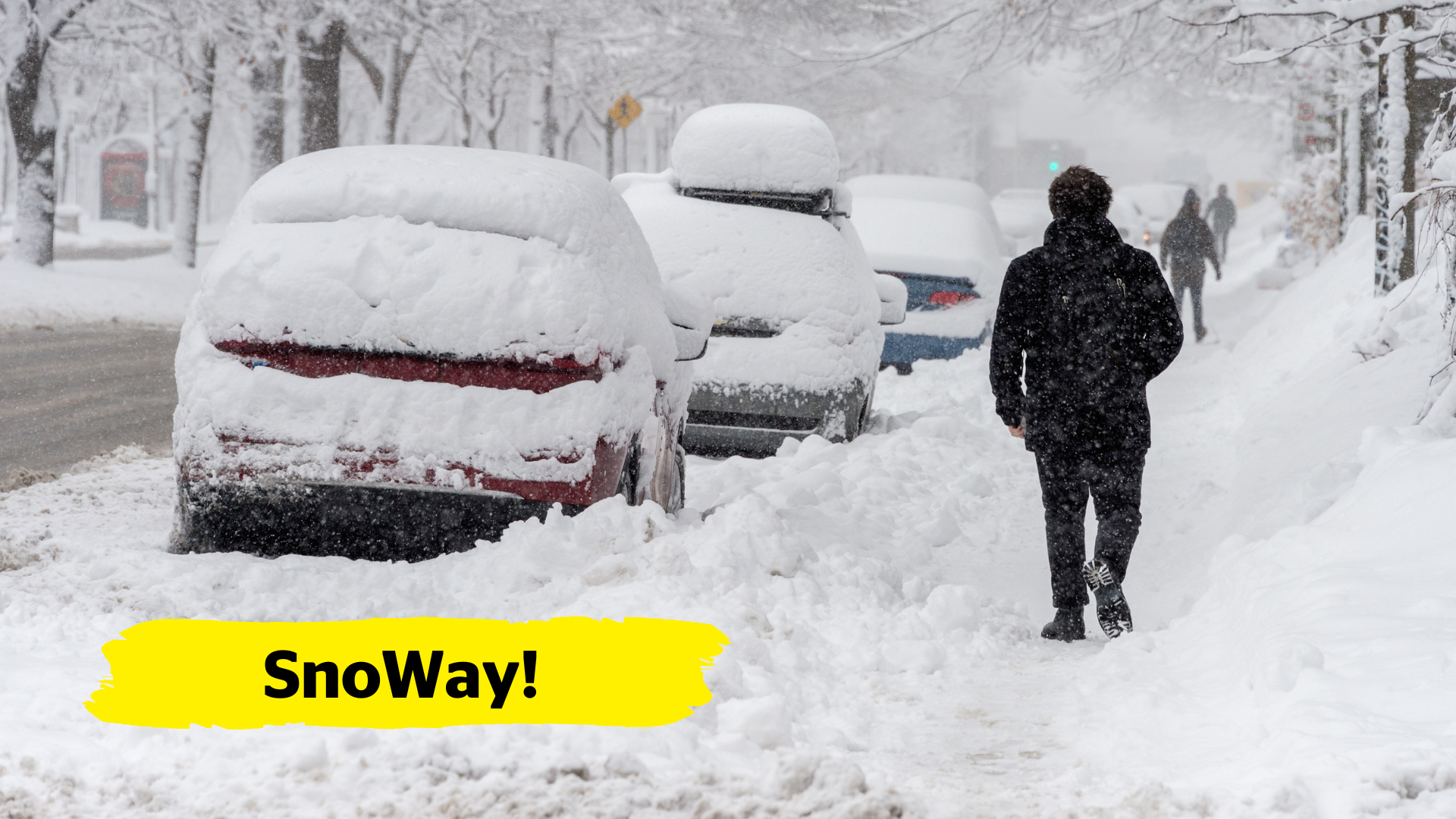
Canadians who are blind, Deafblind, or have low vision need to be able to leave their homes confidently, safely, and spontaneously, knowing they can get where they need to go and will be able to find assistance if they encounter an issue. That’s why CNIB has made a commitment to Safe and Accessible Journeys under our 2023-2028 strategic plan, “The Way Forward."
SnoWay snow removal campaign
The "SnoWay" campaign, which ran from January 15 to March 31, 2024, emphasized the importance of proper snow removal by highlighting the barriers that uncleared or improperly cleared snow creates for people who are blind, Deafblind, or have low vision.
Through the campaign, we:
- Engaged with municipalities and local stakeholders to highlight local issues with accessible snow clearing and discuss their snow clearing policies and practices, as well as promote the campaign, raise awareness about the issue, and mobilize support.
- Reminded friends, family, neighbours, and local businesses of their responsibility to clear snow and ice from public paths of travel, and to submit complaints to their municipality when they encountered a public sidewalk, pathway, or transit stop that was not properly cleared of snow in a timely manner after a significant snowfall (i.e., within 48 hours or less depending on municipal bylaws).
- Ran a #SnoWay photo contest for people to share photos of a poorly cleared sidewalk, crosswalk, or transit stop and documenting the challenges created for pedestrians. Those who submitted photos via social media or email were entered into a random draw for a $100.
Here are just three of the many “SnoWay!” photo submissions we received from our community:
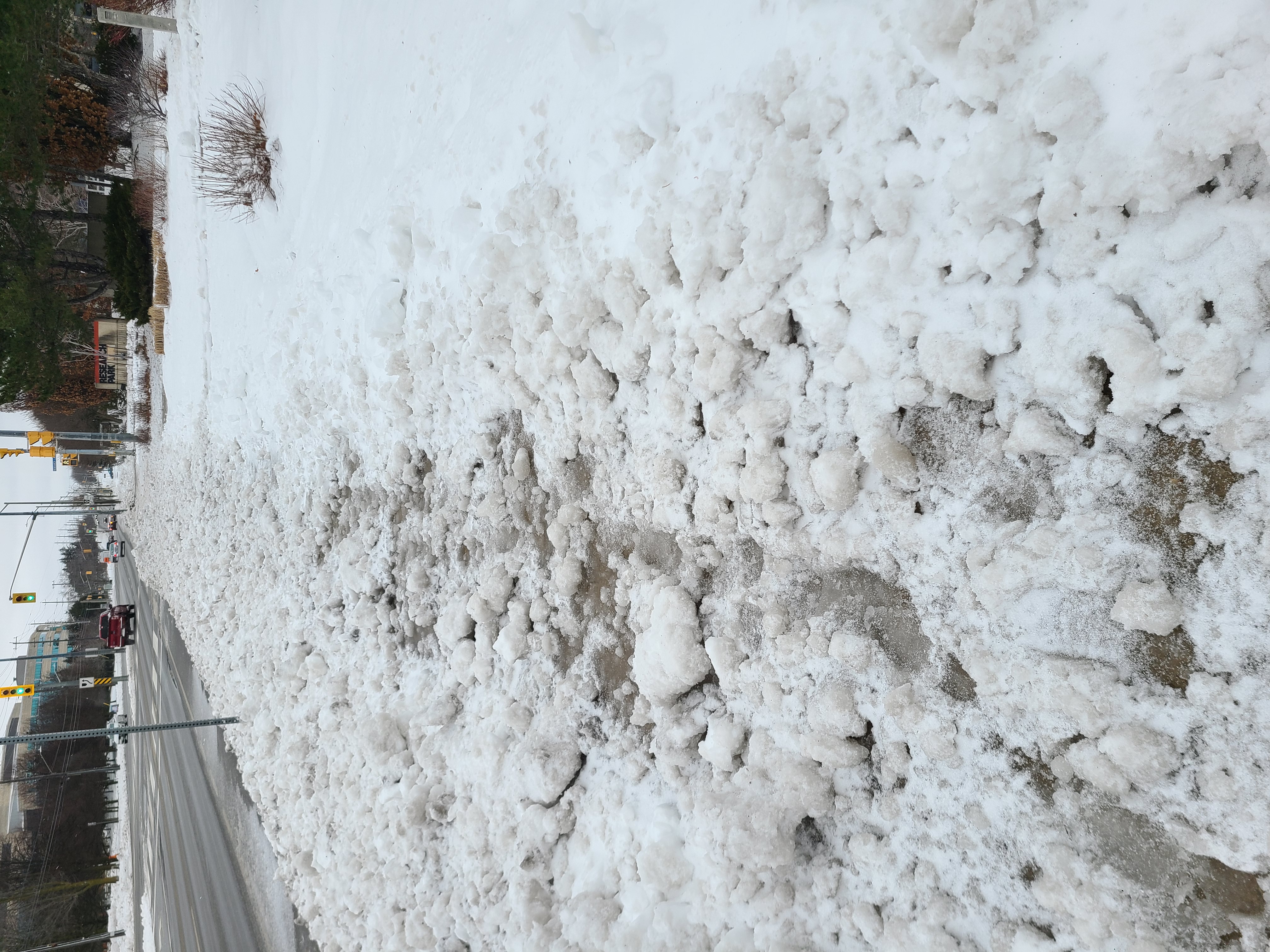 |
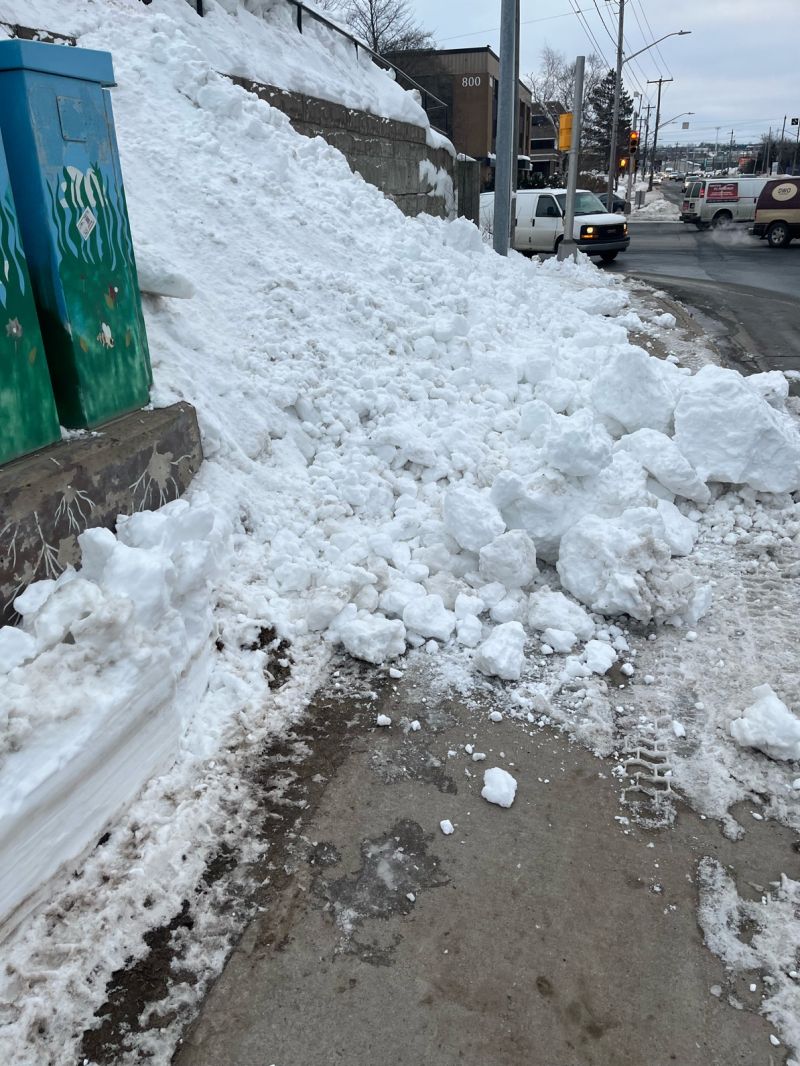 |
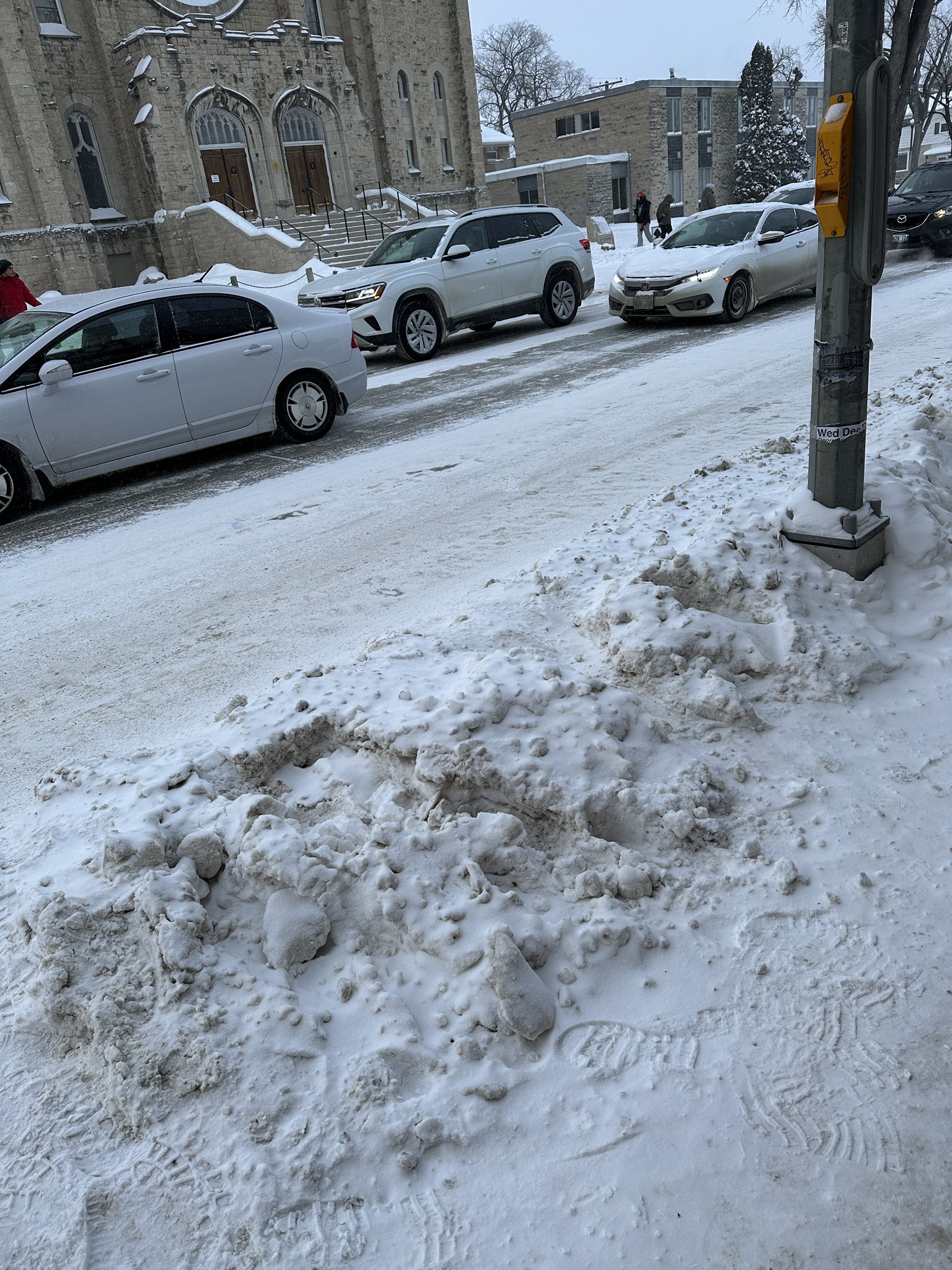 |
| Hannah D., Guelph, Ontario | Tara, N. Halifax, Nova Scotia. | Tyler S., Winnipeg, Manitoba |
What's next?
While the snow may have melted for now, our commitment to advocating for better snow removal remains. Winter will inevitably return, and with it, so will the challenges of navigating snowy sidewalks and transit stops. Stay tuned for the next phase of SnoWay and stay involved by signing up to join us in our future advocacy efforts.
